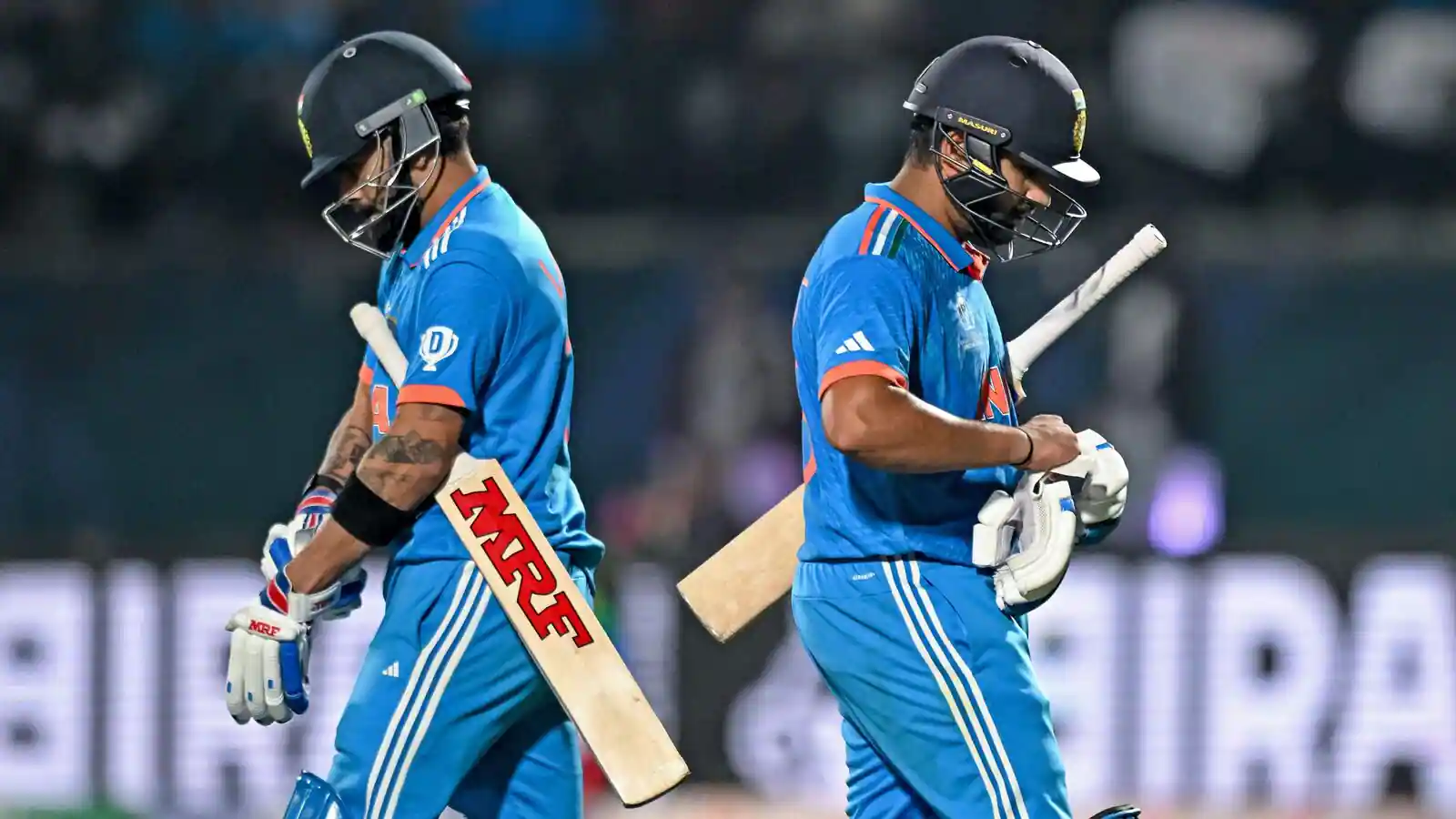Cricket has long been more than just a sport for India and india national cricket team vs australian men’s cricket team match scorecard Australia; it is a shared passion that runs deep in the veins of both nations. The rivalry between the India National Cricket Team and the Australian Men’s Cricket Team is nothing short of legendary, filled with drama, thrill, and high-quality cricket action. From World Cup clashes to heated Test series, matches between these two cricketing giants are always highly anticipated. The match scorecard tells the story not only of numbers but of emotions, strategies, and key moments that turn the tide of the game.
In this article, we’ll dive deep into a comprehensive analysis of their latest match, focusing on the scorecard, key performances, strategies, and the historical context that makes each encounter between these two teams a spectacle for the ages. We will break down each phase of the game—from the toss to the final ball, unravel the player performances, and explore the importance of every significant moment.
Let’s take a closer look at the latest face-off between India and Australia, analyzing each component of the match in detail.
1. Toss and Its Impact: The Precursor to the Match Outcome
The toss is often considered the opening contest of a cricket match, and in the clash between India and Australia, this factor has been historically crucial. The captain winning the toss often faces a dilemma—whether to bat or bowl first, depending on the conditions and the nature of the pitch.
In the latest encounter, it was the Indian captain Rohit Sharma who won the toss and elected to bat first. This decision was in line with the team’s strategy of putting runs on the board and applying pressure through their bowlers. Conversely, Australia’s captain Pat Cummins, known for his aggressive and shrewd leadership, would have preferred to bowl first as well, given the overcast conditions and the tendency of the ball to swing early on.
The Importance of the Toss
Winning the toss is not a guaranteed ticket to success, india national cricket team vs australian men’s cricket team match scorecardbut it can certainly set the tone for the rest of the game. India’s decision to bat first showed a positive mindset, aimed at dictating the pace of the game. On the other hand, Australia’s strategy was clear: strike early and dismiss key Indian batters within the first powerplay.
Historically, in matches between India and Australia, the toss has often influenced the outcome. On flat pitches, batting first has often proved to be a winning strategy, while in overcast conditions or under lights, bowling first has its advantages. The decision to bat first in this game, therefore, was an interesting call, given the slightly unpredictable nature of the pitch.
2. First Innings: India’s Batting Performance
Once India chose to bat first, all eyes were on the opening pair. In this match, the Indian team fielded their top-order stalwarts—Rohit Sharma and Shubman Gill. Both players are known for their attacking prowess, but against a lethal Australian bowling attack, the challenge was enormous.
Rohit Sharma’s Captain’s Knock
Rohit Sharma, leading from the front, played an aggressive and flamboyant innings. He took the Australian bowlers head-on, punishing any loose deliveries. His innings was a combination of power hitting and precise shot selection. Rohit’s century india national cricket team vs australian men’s cricket team match scorecard was not just a personal milestone but also an innings of intent that lifted the entire team.
Shubman Gill’s Supporting Role
At the other end, Shubman Gill provided steady support. While Rohit dominated the bowlers, Gill played a more conservative role, rotating the strike and ensuring India didn’t lose wickets in a cluster. His ability to soak up pressure early on and keep the scoreboard ticking was invaluable.
Middle-Order Resilience
Following the dismissal of both openers, India’s middle order was tasked with building on the solid foundation. Virat Kohli and Shreyas Iyer took up the responsibility, with Kohli once again showcasing why he is considered one of the greatest chasers and accumulators in the modern game. His classy stroke play, combined with his quick running between the wickets, kept the pressure on Australia.
3. Australia’s Bowling Attack: Key Performances and Tactics
Australia, known for their relentless bowling attack, india national cricket team vs australian men’s cricket team match scorecard were not going to make life easy for the Indian batters. The pace attack led by Pat Cummins, Mitchell Starc, and Josh Hazlewood, supported by spin from Zampa, tested the Indian lineup to its core.
Pat Cummins’ Captaincy and Bowling Strategy
Pat Cummins, being an experienced captain, marshaled his troops well, making tactical field changes and varying his bowling attack to keep the Indian batters guessing. His opening spell was tight and economical, but it was later in the innings when Cummins really left his mark, picking up crucial wickets and breaking partnerships.
Mitchell Starc’s Deadly Pace
Mitchell Starc, with his left-arm angle and raw pace, posed the biggest threat, particularly under lights. His ability to swing the ball at high speeds resulted in the quick dismissals of some key Indian players, including Gill and Suryakumar Yadav. Starc’s variations and short-pitched deliveries kept the Indian middle-order in check, preventing them from scoring freely.
Adam Zampa’s Spin Magic
Zampa was the primary spinner for Australia, and he did not disappoint. His ability to vary his flight, pace, and spin troubled the Indian batters, especially during the middle overs when they were looking to accelerate. Zampa picked up crucial wickets, including that of Rohit Sharma, which helped Australia regain control of the game during the middle stages.
4. India’s Total: Setting a Competitive Target
By the end of their innings, India managed to post a total of 310 for 7 in their allotted 50 overs. This score was considered competitive but by no means a guaranteed win, especially against a team as formidable as Australia.
Contributions from Lower Order
The Indian lower-order batsmen played their part in ensuring India reached the 300-mark. All-rounders like Hardik Pandya and Ravindra Jadeja contributed with valuable runs towards the end of the innings. Pandya’s power-hitting in the final overs provided the necessary momentum, while Jadeja’s calm and composed batting allowed India to reach a defendable total.
End-of-Innings Flourish
Australia’s bowlers, particularly Cummins and Starc, came back strongly in the final overs, restricting India from reaching an even bigger total. Despite this, India’s score of 310 gave them a decent platform to defend, especially with their potent bowling lineup.
5. Australia’s Chase: A Battle of Wits and Skill
Chasing 311 was never going to be an easy task, and Australia knew that they had to start well. The opening pair of David Warner and Travis Head were critical to setting up the chase.
David Warner’s Explosive Start
David Warner, known for his aggressive intent, started the Australian innings with a flurry of boundaries. He targeted India’s fast bowlers, particularly Bhuvneshwar Kumar, taking advantage of any width on offer. Warner’s innings provided the impetus Australia needed early on, putting India under pressure from the get-go.
Travis Head’s Steady Approach
While Warner took the aggressive route, Travis Head played the role of the anchor, ensuring that wickets were not lost in a hurry. His ability to rotate the strike and keep Warner on strike was instrumental in Australia’s strong start. Head’s calm and collected approach helped build a solid platform for the chase.
Early Setback and Middle-Order Collapse
However, once Warner was dismissed by Jasprit Bumrah, the Indian bowlers tightened the screws. The wickets of Head, Steve Smith, and Marnus Labuschagne followed in quick succession, leaving Australia in a precarious position. India’s bowling attack, led by Bumrah and Kuldeep Yadav, exploited the pressure, choking the flow of runs.
6. Key Turning Points: Moments That Defined the Match

Cricket is a game of moments, and the match between India and Australia had its fair share of turning points.
Jasprit Bumrah’s Game-Changing Spell
Bumrah’s ability to take wickets at crucial junctures is well-documented, and in this match, he was once again the spearhead of India’s bowling attack. His dismissals of Warner and Smith were pivotal, as these two batsmen are known to be match-winners for Australia. Bumrah’s pinpoint accuracy and deceptive yorkers caused havoc in the Australian camp, turning the game in India’s favor.
Kuldeep Yadav’s Spin Masterclass
Kuldeep Yadav, India’s wrist-spinner, played a crucial role in breaking Australia’s middle order. His variations in flight and pace, combined with sharp turn, made it difficult for the Australian batsmen to settle. Kuldeep’s spell was a defining factor in restricting Australia’s run chase, especially when they were gaining momentum.
Maxwell and Stoinis Resistance
Despite the middle-order collapse, Glenn Maxwell and Marcus Stoinis tried to resurrect the chase with a flurry of boundaries. Maxwell, in particular, played some audacious shots, showing why he is considered one of the most dangerous finishers in the game. However, both players were dismissed just when it seemed they could pull off an improbable win.
7. India’s Bowling: A Masterclass in Pressure Handling
The Indian bowling attack was clinical throughout the match. Jasprit Bumrah and Mohammed Siraj opened the bowling, while the spin duo of Kuldeep Yadav and Ravindra Jadeja handled the middle overs.
Bumrah’s Early Breakthrough
Bumrah’s early dismissal of David Warner was the key to breaking Australia’s rhythm. Warner’s wicket put immediate pressure on Australia, which they struggled to recover from.
Siraj’s Supporting Role
Mohammed Siraj bowled tight lines and maintained pressure on the Australian batsmen. While he didn’t pick up as many wickets as Bumrah, his economy rate ensured that the Australians were always behind the required run rate.
Spin Domination
The spin combination of Jadeja and Kuldeep Yadav took full advantage of a slowing pitch, extracting turn and bounce. The pressure created by these two bowlers led to Australia’s middle-order collapse.
8. Australian Middle Order Collapse: Where the Match Slipped Away
Australia’s batting lineup has often been considered one of the strongest in world cricket, but in this match, they faltered under pressure, particularly in the middle overs.
Smith and Labuschagne’s Struggles
Steve Smith and Marnus Labuschagne are known for their ability to build innings, but they found it difficult to rotate strike against India’s spinners. Both batsmen were dismissed in quick succession, which significantly dented Australia’s chances of staying in the chase.
Pressure from Required Run Rate
As the required run rate kept climbing, Australia’s middle-order found it difficult to cope. Players like Cameron Green and Alex Carey were unable to counter the spin threat posed by Jadeja and Kuldeep, and their dismissals further tilted the balance in India’s favor.
9. Final Overs Drama: Can Australia Pull Off a Miracle?
As Australia’s wickets continued to fall, the onus was on Glenn Maxwell and Marcus Stoinis to provide a late surge. The two are known for their power-hitting abilities and have often bailed Australia out of tough situations in the past.
Maxwell’s Heroics
Maxwell lived up to his reputation by smashing a few boundaries and sixes, keeping the Australian hopes alive. His unorthodox stroke play unsettled the Indian bowlers momentarily, and the crowd could sense a potential match-winning knock. However, Bumrah’s return to the attack saw Maxwell mistime a slower ball, leading to his crucial dismissal.
Stoinis’ Valiant Effort
Marcus Stoinis continued the fight, but the asking rate had become too steep by this point. Despite his best efforts, the mounting pressure proved too much, and he eventually succumbed to a short-pitched delivery from Mohammed Siraj.
10. India’s Fielding Brilliance: Sharp Catches and Agile Stops
While the bowlers were excellent, India’s fielding effort was equally praiseworthy. Over the years, India has improved its fielding standards, and this match was no exception.
Ravindra Jadeja’s Presence
Jadeja, often referred to as the best fielder in the world, showcased his brilliance on the field. His sharp reflexes and accurate throws ensured that the Australian batsmen were always under pressure to take risky singles. Jadeja’s diving stops saved crucial runs, and his catch to dismiss Cameron Green was a game-changing moment.
Kohli’s Athleticism
Virat Kohli, stationed at key positions, also contributed to India’s stellar fielding performance. His energy in the field and quick movements put pressure on the Australians, forcing them into mistakes.
11. Conclusion: India’s Comprehensive Victory
In the end, India emerged victorious by a margin of 35 runs. It was a comprehensive performance by the team, where every player contributed to the win. The scorecard reflected India’s dominance in all departments—batting, bowling, and fielding.
Lessons for Australia
For Australia, there were some key takeaways from the match. While their top order performed reasonably well, the middle order struggled to handle the pressure, and the bowlers allowed India to score more than what was deemed a par total.
12. Historical Rivalry: India vs Australia
Matches between India and Australia are never just about the current series; they are about a storied rivalry that spans decades. From Australia’s dominance in the 90s and early 2000s to India’s resurgence in the late 2010s, every game between these two sides carries historical significance.
Memorable Matches in the Past
One can’t discuss India vs Australia without mentioning iconic matches like the 2001 Kolkata Test where India pulled off a miraculous victory after being forced to follow on, or the 2019 ODI series where India stunned Australia on their home turf.
Rivalry in World Cups
The rivalry is particularly intense in World Cup matches, where Australia has often had the upper hand. However, India has managed to turn the tables in recent years, most notably in the 2011 World Cup where India knocked Australia out in the quarterfinals, en route to their second World Cup title.
13. Player Battles: Head-to-Head Comparisons
Individual performances often stand out in India vs Australia games, with personal rivalries between players adding spice to the contest.
Rohit Sharma vs Pat Cummins
One such battle in this match was between Rohit Sharma and Pat Cummins. Cummins’ consistent line and length tested Rohit’s patience, but the Indian captain rose to the challenge with his brilliant century.
Bumrah vs Warner
Another fascinating duel was between Jasprit Bumrah and David Warner. Warner, known for his aggressive starts, was kept in check by Bumrah’s accurate yorkers and sharp bouncers. Warner’s early dismissal set the tone for India’s dominance.
14. Fan Reactions: Social Media Buzz
No India vs Australia match is complete without the passionate reactions of fans. As soon as the match concluded, social media platforms were flooded with memes, analysis, and reactions from fans of both sides.
Indian Fans’ Elation
Indian cricket fans were ecstatic with the team’s performance, particularly Rohit Sharma’s century and Bumrah’s match-winning spell. Memes celebrating India’s victory spread like wildfire across platforms like Twitter and Instagram.
Australian Fans’ Optimism
Despite the loss, Australian fans remained optimistic, praising the fight shown by players like Maxwell and Stoinis. There was also a lot of discussion about how Australia can regroup and bounce back in the next match.
15. FAQs About India vs Australia Matches
Q1. Who holds the record for the most runs in India vs Australia matches?
Sachin Tendulkar holds the record for the most runs in India vs Australia matches across all formats. His consistency against Australia, especially in Test matches, is legendary.
Q2. How many times have India and Australia faced each other in World Cup finals?
India and Australia have faced each other once in a World Cup final, in 2003, where Australia emerged victorious.
Q3. Who is the most successful bowler in India vs Australia matches?
Anil Kumble holds the record for the most wickets in matches between India and Australia, particularly in Test cricket.
Q4. Which team has the upper hand in head-to-head contests?
Overall, Australia has a better win-loss record against India, but in recent years, India has dominated in bilateral series.
Q5. What was the highest individual score in an India vs Australia ODI match?
Rohit Sharma holds the record for the highest individual score in an India vs Australia ODI, with his 209 in Bangalore in 2013.
Q6. Who is the most successful captain in India vs Australia contests?
Ricky Ponting has been the most successful captain for Australia, while MS Dhoni led India to numerous victories over Australia in all formats.
india national cricket team vs australian men’s cricket team match scorecard










